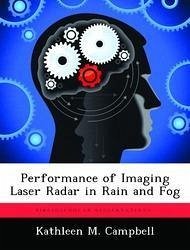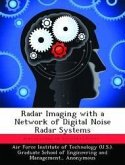The Air Force is currently developing imaging laser radar systems (ladar) for use on precision guided munitions and other imaging systems. Scientists at Eglin Air Force Base, in conjunction with Wright Laboratories, are testing a 1.06-?m wavelength ladar system and need to understand the weather effects on the ladar images. As the laser beam propagates through the atmosphere, fog droplets and raindrops can cause image degradation, and these image degradations are manifested as either dropouts or false returns. An analysis of the dropouts and false returns helped to quantify the performance of the system in adverse weather conditions. Statistical analysis of the images showed non-linear relationships existed between variables, plus graphical analysis demonstrated the behavior of the dropouts and false returns with changing weather conditions. Statistical control charts identified the weather as a significant influence on the quality of the ladar images. By focusing on the false return data, a study of mean free path and the survival equation was accomplished. The mean free path was derived from the rainfall rate, and this mean free path was used in the survival equation to calculate an expected number of false returns for an image. This work led to the hypothesis that raindrops with a diameter of 3.0 mm and larger were causing the false returns seen in the images. However, further analysis revealed that a 3.0-mm raindrop was not capable of scattering enough energy to be detected by the system. It was then hypothesized that the system detector was also picking up solar spectrum energy scattered by raindrops, and that this detector was unable to distinguish between solar energy and laser energy scattered by raindrops.
Hinweis: Dieser Artikel kann nur an eine deutsche Lieferadresse ausgeliefert werden.
Hinweis: Dieser Artikel kann nur an eine deutsche Lieferadresse ausgeliefert werden.








